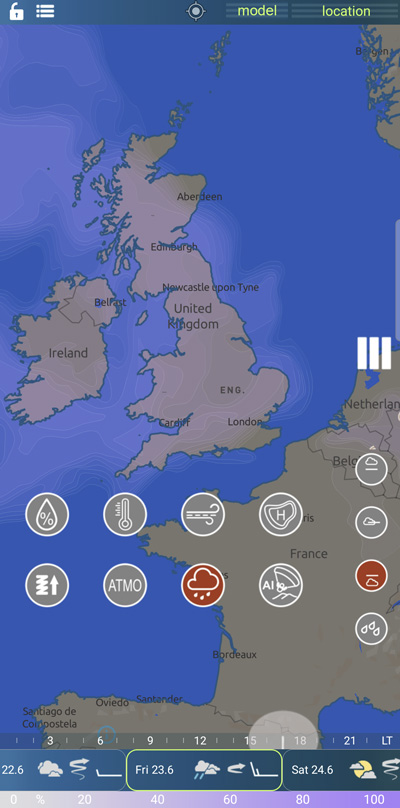How to do it
Select the main map icon with clouds and rain and select the icon for the lower cloud. The bottom cloud cover will be displayed in the coverage range of 0..100% Additional cloud and precipitation maps can be added or removed by clicking on the corresponding icon.
On the formation of lower clouds.
Low clouds are clouds that form in the lower part of the atmosphere, typically below 2,000 meters (6,500 feet) in altitude. These clouds are often characterized by their flat, uniform appearance and can cover large areas of the sky. Low clouds include cloud types such as stratus, stratocumulus, and nimbostratus.
The formation of low clouds is influenced by several factors:
1. Moisture: Low clouds form when moist air near the Earth's surface is lifted and cooled. This can occur through processes such as convection, where warm air rises, or when air is forced to rise over elevated terrain or along weather fronts.
2. Condensation: As the moist air rises and cools, it reaches its dew point temperature, causing water vapor to condense into tiny water droplets or ice crystals. These droplets or crystals then come together to form the visible cloud.
3. Stability: Stable atmospheric conditions, where the air near the surface is cooler and more dense than the air above, promote the formation and maintenance of low clouds. The stable air prevents the clouds from dissipating and keeps them relatively close to the ground.
4. Air Masses: Different air masses with varying moisture content and temperature characteristics can influence the formation of low clouds. For example, the presence of a maritime air mass, which is moist and relatively cool, can enhance low cloud formation over coastal regions.
Low clouds can have a significant impact on weather and visibility, as they often bring overcast conditions, fog, or drizzle. They can also affect the Earth's energy balance by reflecting sunlight back into space, which can have implications for temperature and climate.
It's important to note that cloud formation is a complex process influenced by various atmospheric conditions, and the specific formation mechanisms may vary depending on the region and local weather patterns.